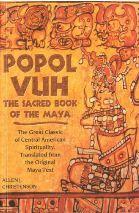In the radio program Latino USA, I listened to the episode titled Rodeo. Originally broadcasted on April 7th, 2017, it was put on Latino USA on April 1st, 2022. I listened to this episode on April 5th, 2022. I chose this episode because we are currently learning about colonialism and the intersecting of cultures. Well, a rodeo is just that. It was part of Mexican culture before it merged into American culture. In this episode, we learn about the Tucson Rodeo Parade and how it is a mix of both Mexican and American cultures. Some people think that it is the most American sport, while others, as we see the producers interviewing people at the rodeo, say that it is more Mexican than American. In fact, being a "cowboy" was first done by Mexicans in the 1500s. It then started to spread to the USA in the 1700s as vaqueros started to teach their skills to others. This episode explained in great detail what the rodeo was all about. One interviewee stated, "The rodeo is not about color. It's about an animal, a man, trying to compete" (Latino 8:48-8:57). I enjoyed listening to the culture and history of how cowboys came about. What I didn't like, however, was the obvious sexism rooted in being a cowboy. When explaining the six events of the rodeo, they used the term "cowboys" in all but one. In this one event, instead of stating "cowboys," they explain that a woman comes in to do this event. This to me means that in the previous events, the cowboys were only men. Hopefully, in the generations to come, there will be more women included in more events.
 |
| A Vaquero on his Horse |
The article titled "Rodeo: From Custom to Ritual" by Beverly J. Stoeltje also talks about the rodeo and how it is a mix of both American and Mexican cultures. She covers the rise and fall of the cowboys and their traditions mixed in with the economics of it. What I like most is she explains why we have performance rodeos today by stating, "The American public developed such a fascination with the cowboy that a stage and audience for cowboy performance was available even when cowboy work was not. So it was that the cowboy began to perform his skills for an audience" (Stoeltje 247). This connects to the episode as it explains why hundreds of people come to see cowboys. Both the episode and article show the history and blending of Mexican and American cultures. It is this connection that I chose this article as it goes into great detail on why we are so fascinated with cowboys.
Both of these works show the effects of colonialism. The article goes through how the rodeo entered the USA as a result of the Spaniards. It states, "By the thirties, when rodeo form crystallized, the western United States was sufficiently settled that it could begin to look back over its recent past and honor it with cowboy reunions and celebrations of heritage" (Stoeltje 254). From the introduction of rounding up animals through the Spaniards all the way to today, of honoring heritage. We learn later on in the episode that the rodeo isn't just an event, it is a religion to some. My theme of religion ties into this episode as the culture of what it means to be a cowboy. To live and breathe being a vaquero, the Mexican word for "cowboys." It states, "Rodeo is an essential part of their lives, so much so they call it their religion" (Latino 16:28-16:33). Learning about the rodeo gave me so much pride in my heritage. It not only shows how cultures spread and intermingled, but the importance it has on many as some center their lives on being a cowboy.
Here is a video explaining more about vaqueros:
Works Cited:
Latino USA, 13 Mar. 2022, www.latinousa.org/.
Stoeltje, Beverly J. “Rodeo: From Custom to Ritual.” Western Folklore, vol. 48, no. 3, 1989, pp. 244–55, https://doi.org/10.2307/1499741. Accessed 6 Apr. 2022.



No comments:
Post a Comment